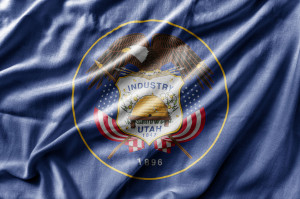The Vital Role of Special Districts in Utah’s Communities
 In the fabric of Utah’s government, special districts are the often-unsung heroes working behind the scenes to provide essential services that touch every resident’s life. From clean water to fire protection, from sewer systems to public transit, special districts operate with a singular mission: to serve communities with efficiency, expertise, and a local focus. As the voice of these districts, the Utah Association of Special Districts (UASD) is proud to highlight the vital role these entities play in the functioning of our state, our government, and our people.
In the fabric of Utah’s government, special districts are the often-unsung heroes working behind the scenes to provide essential services that touch every resident’s life. From clean water to fire protection, from sewer systems to public transit, special districts operate with a singular mission: to serve communities with efficiency, expertise, and a local focus. As the voice of these districts, the Utah Association of Special Districts (UASD) is proud to highlight the vital role these entities play in the functioning of our state, our government, and our people.
What Are Special Districts?
Special districts are independent, limited-purpose governmental units created to deliver specific services that general-purpose governments—like cities and counties—may not be able to effectively provide on their own. In Utah, these districts are formed through voter approval or legislative action and are governed by local boards who are accountable to the public. They are empowered to levy taxes, charge fees, and issue bonds, making them uniquely equipped to handle specialized services that require dedicated oversight and funding.
Why Special Districts Matter in Utah
Utah’s population is growing at one of the fastest rates in the nation. With that growth comes increased demand for services—especially in areas like water, sanitation, transportation, and emergency response. Special districts have proven to be agile, responsive, and fiscally responsible entities that adapt to the needs of their specific service areas.
Let’s take a closer look at how special districts serve the state in key ways:
1. Ensuring Safe, Clean Water
Water is life in Utah’s arid climate. Special service districts and water conservancy districts manage the sourcing, treatment, and distribution of water to homes, businesses, and farms across the state. These districts play a pivotal role in water conservation efforts, infrastructure development, and emergency drought response. With careful planning and scientific expertise, they ensure that Utahns have reliable access to clean water—now and into the future.
2. Protecting Public Health and the Environment
Sewer and sanitation districts are responsible for the collection and treatment of wastewater, an often-overlooked but critically important public health service. These districts help protect our natural waterways, preserve environmental quality, and prevent the spread of disease. Their work ensures compliance with state and federal regulations while safeguarding the ecosystems we cherish.
3. Providing Fire and Emergency Services
Many rural and suburban areas in Utah rely on special service districts to deliver fire protection and emergency medical services. These districts allow communities to tailor their emergency response systems to local risks and population densities. They also ensure rapid response times, professional staffing, and coordination with other emergency agencies.
4. Managing Public Transportation and Infrastructure
Transportation districts like Utah Transit Authority (UTA) help keep Utah’s economy moving. By providing accessible and efficient public transit options, these districts reduce traffic congestion, improve air quality, and make commuting feasible for thousands of residents. Other infrastructure-related districts oversee roads, stormwater systems, and flood control—ensuring safe and resilient communities.
5. Enhancing Quality of Life
Parks and recreation, cemetery, and library districts enhance the cultural and social fabric of Utah’s communities. They offer valuable services that enrich lives, preserve heritage, and bring people together. These districts are deeply rooted in the communities they serve, with local boards that understand and prioritize neighborhood needs.
Efficient, Transparent, and Locally Controlled
One of the greatest strengths of special districts is their efficiency. Unlike broader government bodies, special districts are focused solely on their designated services. This single-purpose structure allows for better specialization, clearer accountability, and more transparent budgeting. Local governance ensures that decision-making stays close to the people—district boards often include community members who live in and care deeply about the areas they serve.
Furthermore, special districts in Utah operate with financial transparency and oversight. UASD supports strong governance practices, promotes best-in-class training for board members, and advocates for policies that enhance accountability and public trust.
Supporting the Future of Utah
As Utah continues to evolve, special districts will be central to addressing the state’s biggest challenges—urban growth, environmental sustainability, aging infrastructure, and public safety. The flexibility and innovation that special districts provide make them uniquely capable of rising to these challenges. Whether through investing in water reuse technology, expanding broadband access, or improving disaster preparedness, special districts are pioneering solutions that benefit us all.
At UASD, we believe that when special districts thrive, Utah thrives. That’s why we work tirelessly to support our members with advocacy, education, and resources that empower them to serve their communities even better.
Special districts are not just part of Utah’s government—they are foundational to its success. Their impact is profound, yet often invisible to the public eye. They represent the best of what local governance can offer: specialized expertise, community-driven priorities, and a commitment to excellence. As we look to the future, UASD will continue to champion the work of special districts and ensure they have the tools they need to keep Utah strong, resilient, and thriving.






